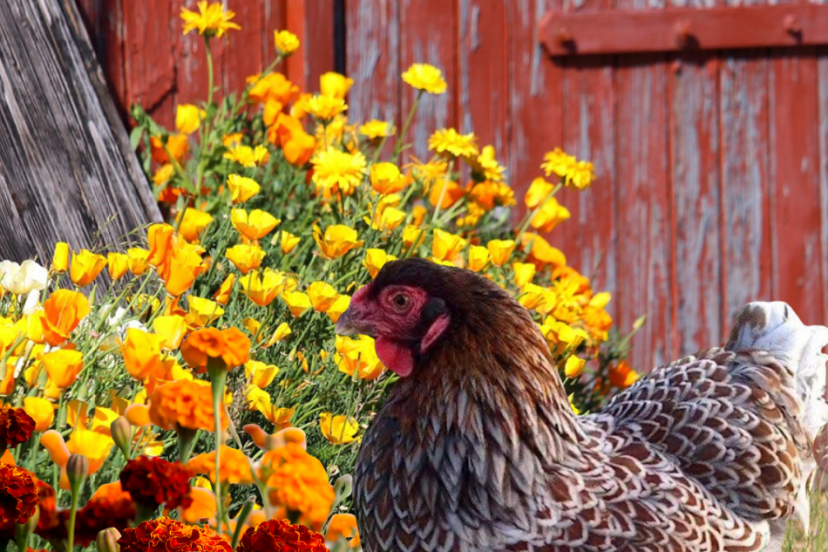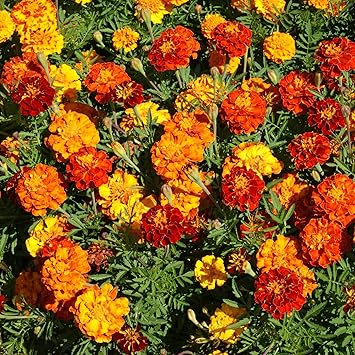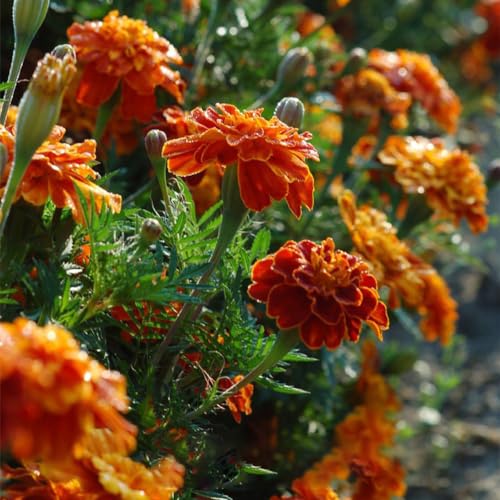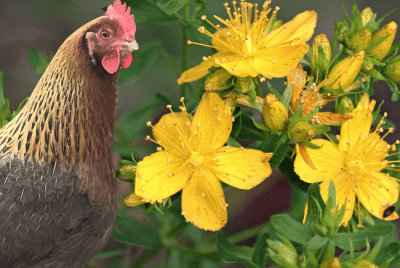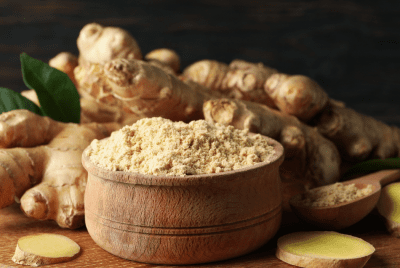Marigolds for Chickens In Your Coop Environment?
Marigolds and Chickens do they even go together keep reading and we will answer this interesting question. With their vibrant colors and unique scent, we found that marigolds can do more than just brighten up your garden. When strategically planted in and around your chicken coop, marigolds can offer a range of benefits to both your feathered friends and the overall environment. These hardy flowers are known for their pest-repelling properties, making them an excellent natural insect deterrent for your coop. By planting marigolds near your coop, you can help keep pesky bugs like mosquitoes, flies, and other parasites at bay, reducing the risk of disease transmission to your chickens.
In addition to their pest-control abilities, marigolds also have antibacterial and antifungal properties that can help create a healthier environment for your flock. These flowers can improve soil health by attracting beneficial insects and microorganisms, leading to a more sustainable and thriving ecosystem in and around your chicken coop. Consider adding marigolds to your coop area to enhance the well-being of your chickens while also adding a pop of color to your outdoor space.

Key Takeaways:
- Repel insects: Marigolds can help repel insects such as mosquitoes, flies, and ticks in your chicken coop environment.
- Attract beneficial insects: Marigolds can attract beneficial insects like ladybugs and butterflies, which can help keep harmful insects under control.
- Antibacterial properties: Marigolds contain antibacterial properties that can promote a cleaner and healthier environment for your chickens.
- Reduce stress: The vibrant colors and pleasant scent of marigolds can help reduce stress in chickens, creating a more relaxed and comfortable environment.
- Natural deodorizer: Marigolds can act as a natural deodorizer in the chicken coop, masking any unpleasant odors and keeping the environment fresh.
The Botanical Profile of Marigolds
Some of the most popular ornamental plants, marigolds (Tagetes) are known for their vibrant colors, easy maintenance, and pest-deterring properties. These annual flowers belong to the daisy family and are native to the Americas, with a variety of species and cultivars available for cultivation.
Varieties of Marigolds Commonly Grown
Varieties of marigolds commonly grown include the French marigold (Tagetes patula), African marigold (Tagetes erecta), and signet marigold (Tagetes tenuifolia). French marigolds are compact plants with small flowers in red, orange, and yellow hues. African marigolds, on the other hand, display large pom-pom-like blooms in shades of yellow and orange. Signet marigolds have delicate, lacy foliage with small, single flowers in yellow and orange tones. Each variety brings its unique charm to the garden and offers different benefits.
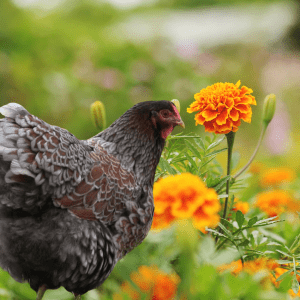
Active Compounds and Their Functions
Any discussion of marigolds would be incomplete without mentioning their active compounds and their functions. Marigolds contain compounds such as thiophenes, carotenoids, flavonoids, and terpenes, which contribute to their medicinal and insect-repellent properties. Thiophenes, for example, have antifungal and antibacterial properties, while carotenoids provide the plants with their vibrant colors. Flavonoids act as antioxidants, protecting the plant from environmental stressors, and terpenes aid in pest control by repelling insects.
With thiophenes offering antifungal and antibacterial properties, carotenoids providing vibrant colors, flavonoids acting as antioxidants, and terpenes aiding in pest control, marigolds are a powerhouse of beneficial compounds that contribute to their overall health and pest-deterring capabilities in the chicken coop environment.
Marigolds for Pest Control
Natural Pesticide Qualities of Marigolds
Any poultry owner knows the constant battle against pests like flies, mosquitoes, and even mites in the chicken coop. Utilizing marigolds can be a natural and effective solution for pest control. Marigolds contain compounds that act as a natural pesticide, repelling many insects that are harmful to chickens.
How to Plant Marigolds for Optimal Pest Deterrence
Natural pesticide qualities aren’t the only benefit of marigolds in the chicken coop; they also serve as a beautiful addition to the environment. When planting marigolds for pest deterrence, ensure that they are strategically placed around the coop and run to maximize their insect-repelling effects. Marigolds thrive in sunny areas with well-drained soil, making them easy to incorporate into the coop’s landscaping.
For optimal pest deterrence, consider planting marigolds in containers near coop entrances and windows to discourage insects from entering. Additionally, interspersing marigolds throughout the chicken run can help create a barrier against pests that might harm your flock.
Enhancing Coop Aesthetics with Marigolds

Designing with Marigolds in Mind
Unlike other flowers, marigolds offer a unique charm that can greatly enhance the aesthetics of your chicken coop.
These vibrant blooms come in various shades of gold, orange, and red, adding a pop of color to the environment.
When strategically planted around the coop, marigolds can create a visually appealing and inviting space for both your chickens and yourself.
Marigolds Through the Seasons – Ensuring Year-Round Beauty
For chicken coop owners looking to maintain a beautiful and colorful landscape year-round, marigolds are an excellent choice. These hardy flowers thrive in different seasons, providing continuous blooms from spring to fall.
By selecting various marigold varieties with different bloom times, you can ensure that your coop is always adorned with striking flowers.
Marigolds are not only visually appealing but also serve a practical purpose in the chicken coop environment. Their strong fragrance acts as a natural insect repellent, keeping pests away from your coop and ensuring the health and comfort of your chickens.
Through strategic planning and careful selection of marigold varieties, chicken coop owners can create a visually stunning and pest-free environment that enhances both the aesthetics and functionality of the space.
Marigolds as a Behavioral Enrichment Tool
Stimulating Natural Foraging Behavior
Behavior: Marigolds can serve as an excellent tool for stimulating natural foraging behavior in chickens. Chickens are instinctive foragers, constantly pecking and scratching at the ground in search of food. By scattering marigold petals or planting marigolds in the coop, you can encourage your chickens to exhibit this natural behavior. This not only keeps them active and engaged but also helps them stay mentally stimulated and physically active.
Reducing Stress and Promoting Well-being with Visual Stimuli
Behavior: Marigolds, with their vibrant colors and distinctive appearance, can act as visual stimuli that reduce stress and promote well-being in chickens. The bright hues of marigolds are visually appealing to chickens, providing a form of environmental enrichment. This can help alleviate boredom, reduce aggression, and improve the overall welfare of your flock.
Enrichment: Visual stimuli, such as colorful flowers like marigolds, have been shown to have a calming effect on chickens, lowering their stress levels and promoting a sense of well-being. By incorporating marigolds into your chicken coop environment, you are not only adding beauty but also providing a natural form of enrichment that can enhance the quality of life for your feathered friends.
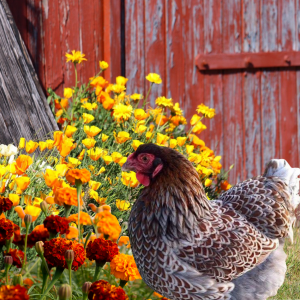
Health Benefits for Chickens
Now let’s probe into how marigolds can benefit the health of your chickens. These vibrant flowers are not only a feast for the eyes but also offer a range of advantages for poultry health.
Potential Immune System Boost from Marigold Consumption
Benefits: Marigolds contain compounds like carotenoids, flavonoids, and antioxidants that can potentially boost the immune system of chickens. By incorporating marigolds into the diet of your flock, you may help support their immune response to common illnesses and diseases. These natural plant compounds work to strengthen the body’s defenses and promote overall well-being in chickens.
Skin and Feather Benefits from Marigold Pigments
An interesting aspect of marigolds is their pigments, particularly the vibrant orange hues. These pigments, such as lutein and zeaxanthin, not only give marigolds their color but also offer benefits for chickens’ skin and feathers. When chickens consume marigold petals, these pigments can enhance the pigmentation of egg yolks and the overall health of feathers, promoting a glossy and vibrant plumage.
These pigments may also have antioxidant properties that help combat oxidative stress in chickens, reducing the effects of free radicals and promoting healthier skin and feathers. Incorporating marigold petals or extracts into your chickens’ diet can contribute to their overall appearance and well-being.
Other Companion Plants for Chicken Coops
Complementary Plants That Work Well with Marigolds
For a well-rounded chicken coop environment, consider planting complementary plants alongside marigolds. Plants like lavender, mint, and oregano can thrive alongside marigolds and offer additional benefits to your flock. Lavender not only adds a pleasant scent to the coop but also has calming properties that can reduce stress in chickens. Mint is known for its pest-repelling qualities, helping to keep unwanted insects at bay. Oregano is not only a natural antibiotic but also a favorite treat for chickens.
Plants to Avoid in Chicken Coops
Well, not all plants are suitable for a chicken coop environment. Some plants can be harmful or even toxic to chickens if ingested. Avoid planting plants such as foxglove, nightshade, and rhubarb in or near your chicken coop. These plants contain toxins that can be harmful to chickens if consumed. It’s vital to be mindful of what you include in the coop surroundings to ensure the safety and well-being of your flock.
Coops: While some plants can be beneficial, it’s crucial to be cautious about what you introduce into your chicken coop environment. Ensuring that dangerous plants are kept away from your chickens is key to maintaining a healthy and safe environment for your feathered friends.

Practical Tips for Growing and Maintaining Marigolds
All poultry owners aim to create a healthy and vibrant environment for their chickens. Introducing marigolds into your chicken coop can be a game-changer due to their numerous benefits. To ensure a successful growth of marigolds around your coop, consider these practical tips for growing and maintaining these beautiful flowers.
Soil, Water, and Sunlight Requirements
Practical planning for your marigold garden should start with understanding the soil, water, and sunlight requirements of these flowers. Marigolds thrive in well-drained soil that is rich in nutrients.
Ensure the area receives full sunlight for at least six hours a day to promote healthy growth. Water the plants consistently, allowing the soil to dry slightly between watering sessions.
Common Challenges and How to Address Them
Maintaining a flourishing marigold garden can come with its own set of challenges. Pests and diseases may try to sabotage your efforts, but there are ways to address these issues. Regularly inspect the plants for any signs of pests or diseases, such as aphids or powdery mildew. If detected, promptly treat the affected plants with organic remedies to prevent further spread and damage.
Maintaining a vigilant eye on your marigold garden will ensure a thriving environment for both your flowers and your chickens. Assume that addressing any challenges promptly will lead to a more successful and enjoyable gardening experience.
Conclusion
Following this exploration of the benefits of marigolds in a chicken coop environment, it is clear that these vibrant flowers offer several advantages for both the chickens and the coop itself. From deterring pests and providing imperative nutrients to adding a pop of color and beauty to the surroundings, marigolds are a valuable addition to any chicken keeper’s garden. To learn more about other beneficial flowers for chickens, check out this article on the Top 10 Flowers Chickens Can Eat.
FAQ
Q: What are the benefits of having marigolds in your chicken coop environment?
A: Marigolds in your chicken coop environment can help repel insects, provide natural pest control, and improve the overall health of your chickens.
Q: How do marigolds help in repelling insects from the chicken coop?
A: Marigolds have a strong scent that deters insects such as flies, mosquitoes, and other pests from entering the chicken coop, thus reducing the chances of infestations.

Q: Can marigolds improve the health of chickens in the coop?
A: Yes, marigolds have antibacterial and antifungal properties that can help prevent infections in chickens. Additionally, the presence of marigolds can reduce stress in chickens, leading to better overall health.
Q: Are marigolds safe for chickens to consume?
A: Yes, marigolds are safe for chickens to consume in moderate amounts. They are non-toxic and can even provide nutritional benefits such as antioxidants and vitamins.
Q: How can marigolds be incorporated into the chicken coop environment?
A: Marigolds can be planted around the perimeter of the coop, hung in bouquets inside the coop, or dried and sprinkled in nesting areas to repel pests and promote a healthier environment for the chickens.
Check Out Some of These Articles As Well:
3 Good Reason To Make Homemade Chicken Feed
7 Herbs for Natural Chicken Health Remedies

